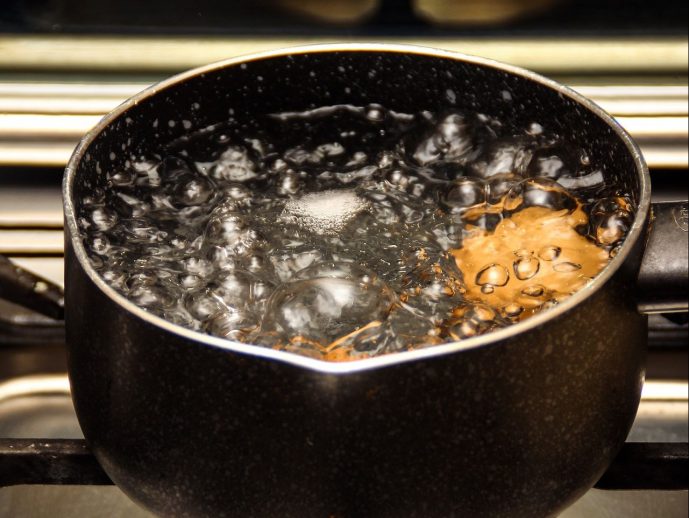Categories more
- Adventures (17)
- Arts / Collectables (15)
- Automotive (37)
- Aviation (11)
- Bath, Body, & Health (77)
- Children (6)
- Cigars / Spirits (32)
- Cuisine (16)
- Design/Architecture (22)
- Electronics (13)
- Entertainment (4)
- Event Planning (5)
- Fashion (46)
- Finance (9)
- Gifts / Misc (6)
- Home Decor (45)
- Jewelry (41)
- Pets (3)
- Philanthropy (1)
- Real Estate (16)
- Services (23)
- Sports / Golf (14)
- Vacation / Travel (60)
- Watches / Pens (15)
- Wines / Vines (24)
- Yachting / Boating (17)
Culinary Adventures: Cooking with Harvested Rainwater
Published
08/25/2023Ever watched rainfall slowly falling on a quiet afternoon and thought about its potential? Water, the mainstay of life, originating from the cloud-draped skies, holds a host of possibilities, particularly in the kitchen.
This article guides you through the exciting culinary journey of cooking with harvested rainwater - its advantages, risks, safety measures, and, most importantly, its application to delicious meals.
The Charm of Rainwater
Rainwater offers a natural charm that other water sources fail to match. It has an air of purity that comes only from the sky above.
If you were offered unusual recipes with whisky you might get excited. But, if the same were said of rainwater, you might be less enthusiastic. But, wait.
By using it in cooking, you are incorporating pure nature into your everyday dishes. Unlike municipal water which often contains minerals and chlorine, rainwater is soft and free from added chemicals.
Advantages of Using Rainwater
Rainwater isn't just appealing because it's pure - it also carries some profound advantages for your culinary adventures.
First off is the taste - foods prepared with rainwater often have their flavors enhanced due to their soft chemistry.
Secondly is its environmental friendliness - by utilizing rainwater, you're reducing your reliance on municipal water supplies and thereby contributing to water conservation.
Harvesting Rainwater: Key Considerations
Before immersing yourself in a culinary journey with rainwater, there are important things to remember when collecting it. How you gather can impact the quality and safety of the water for consumption.
Ensure your collection method does not involve surfaces where bird feces or chemical substances may contaminate. Consider slimline tank options for storage after careful roof run-off system planning.
Risks and Safety Measures
While harvested rainwater has its perks, potential risks shouldn’t be shrugged off either. Heavy metal contamination or bacterial infiltration could pose health threats that need vigilant attention.
Therefore, adopting safety measures such as regular maintenance and cleaning routines for your catchment system can eliminate these risks significantly.
Sterilization Processes for Rainwater
Ensuring the safe use of harvested rainwater requires sterilization procedures that combat microorganisms or contaminants that may have seeped in during collection.
Techniques like boiling, filtration systems, or chemical disinfectants are commonly used ways to make certain that your rainfall harvest is healthy for consumption.
Cooking With Rainwater: Taste Differences
True artistry comes alive when uncompromised flavor meets nourishment in the kitchen arena. There are indeed some unusual culinary pairings that work well. But, convincing people to cook with rainwater might be hard at first.
However, cooking soups and stews with harvested rainwater can deliver an unexcelled flavor experience arising from its soft nature enhancing the meal's taste profile.
Diverse Culinary Uses of Rainwater
Baking bread with water derived straight from clouds can form loaves fluffier than ever owing to the lack of hard minerals found in regular tap water.
Brewing coffee or tea becomes an upgraded experience when made using naturally mild-acidic rainwater that allows for coaxing out nuanced flavors usually masked by harder tap water.
Nutritional Profile Comparison: Tap Water vs. Rainwater
Next time you fill up a pot with tap water versus collected rain; remember something.
Unlike treated tap water with its trace minerals relevant for nutrition balance replaced by added chemicals, rainwater preserves its mineral-rich constitution devoid of any additives or treatments.
Future Predictions on Water Usage in Kitchens
With green living becoming more than just a trend and sustainability taking center stage globally.
Envision your kitchen lifestyle transformed dramatically through conscientious practices like cooking with harvested rain - a vision steering closer toward reality each passing day.
Choosing the Right Equipment for Rainwater Harvest
Equipping your home for rainwater collection involves careful choices regarding catchment surfaces, filtration systems, and storage units.
Ensuring you have a clean, debris-free catchment surface can help maintain the purity of your rainwater. As far as water tanks go, there is a wide range to choose from as you can see here at watertankfactory.com.au.
The Filtration Indispensable
A vital part of this process is the filtration system. This protects against any macro and microorganisms that may find their way into your collection.
Look for high-quality filters designed to remove harmful contaminants without stripping beneficial minerals from the water.
Storage Units: Key to Quality Maintenance
When it comes to storing your harvested rainwater, it's essential to choose units that ensure durability and prevent bacterial growth. Stainless steel tanks or food-grade polyethylene options seem to be a preferred choice owing to their longevity and safety quotient.
Adventurous Yet Conscientious Cooking Practices
Incorporating rainwater in your cooking requires a commitment not just to adventurous cooking, but conscientious adherence to safety norms. Indeed, it’s a commitment that extends beyond gastronomic satisfaction to foster sustainability.
The Last Bite
Cooking with harvested rainwater opens up an innovative culinary route teeming with environmental attunement and unique taste exploration.
Embracing harvested rainwater entails more than just an eco-friendly choice - it symbolizes a profound kinship with nature and validates our proactive role in upholding sustainable living principles right within our kitchens.















